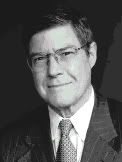 Today’s students are strong advocates for sustainability. What can schools do to channel that passion?
Today’s students are strong advocates for sustainability. What can schools do to channel that passion?I am inspired every day by my children, who are leapfrogging over me in this race for more environmental information and action. Schools are educating kids today for jobs that don’t yet exist. We don’t know what the next big innovation will be, so schools have to prepare students for a complex, interdependent world. This means giving them opportunities for learning, exploring, and leading not just in a classroom or on campus, but in their communities so that they can make a differ- ence while they are in school.
How do you keep the sustainability ethos at the forefront of the company when the scale has changed so much?
We see sustainability not as a destination but as the journey. When we hire, we look for individuals who embody the spirit and the heart and the resourcefulness that Roxanne and Burt brought to this company at the very beginning. Our busi- ness model looks at the triple bottom line of people, planet, and profit.
The company has been housed in a cabin, a schoolhouse, a bowling alley, and now a factory in Durham, N.C. Tell us about that move.
We’re a company that has gone through continuous change since the beginning. Our latest move was out of an identityless office park in Research Triangle Park back to our roots in a repurposed factory building made of brick and reclaimed timber. It fits our company to a T.
Tell us about the philanthropic partners of Burt’s Bees.
Our brand is a relationship with the customer. That’s also the way we think about these partnerships. We look for organizations that “live the greater good,” which is our business philosophy: Teach for America, the Boy Scouts, the North Carolina Conservation Network, to name a few. By partnering with others, we extend our philanthropic reach.
You graduated from Dartmouth College in New Hampshire, got an MBA from Harvard in Massachusetts, and now serve on the board of trustees of Ravenscroft School in Durham. Which school are you most devoted to and why?
Just as I have four children and I love all of them, I have three schools and I love all of them.
That’s a very diplomatic answer.
Dartmouth was my first love. They call Dartmouth the Big Green, and a lot of the values that I hold now were planted and nurtured there. I’ve given back to Dartmouth every year for the 20 years since I’ve graduated, and I know I am not alone in my class. At Dartmouth, you live in a community that has a sense of pur- pose and sense of place written all over it. You could say that my heart is at Dartmouth, my head is at Harvard, and my hands are at Ravenscroft.
Burt Shavitz was a beekeeper with a honey house full of leftover beeswax. In 1984, Roxanne Quimby made some natu- ral candles from Burt’s wax and sold them at a crafts fair at the local junior high school. That modest partnership evolved into Burt’s Bees, a corporation valued at nearly a billion dollars when it was sold in 2007. Current CEO John Replogle oversees the Burt’s Bees mission to be the greenest personal-care company on earth. Replogle, who delivers the keynote address at the CASE-NAIS Independent Schools Conference later this month, spoke to CURRENTS about Burt’s Bees’ big, green heart.
This article is taken from the January 2010 issue of CASE CURRENTS.


